On photography websites we're forever going on about what we can't buy— "wishful thinking" cameras, future technologies, rumors of coming products, capabilities we need but don't have. Think about it. Every now and then it's probably healthy to reflect on what we can buy, and to remember how recently we couldn't. Things have gotten much better for us in a relatively short time, after all.
Got any other good examples? Here are a few that came to my mind (I could add some more, but I'm tired):
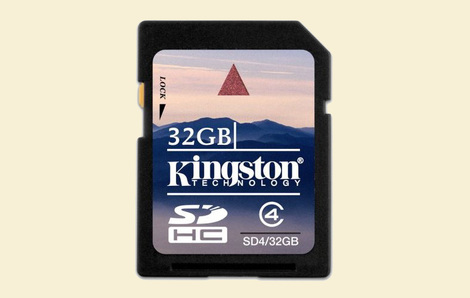
Kingston 32GB SDHC flash memory—Remember when the first 1GB IBM Microdrive came out? And that it was a miniaturized hard drive the size of a CF card (i.e., roughly three times the size of this) and cost "only" $500? And how amazing that seemed at the time?
Canon Rebel XS and EF-S 18–55mm IS lens—Remember back in 2003 when the Digital Rebel, the first true "Volkskamera," came out? With "crippled" firmware and a whopping six megapixels, lapping the then-still-recent D30? And how, if you bought it without a lens, it actually cost less than a thousand dollars (for the first time ever)? And how people back then snarfed 'em up by the bushel if not the boatload?
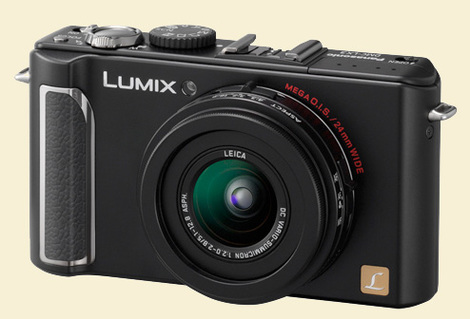
Panasonic Lumix DMC-LX3—Well, okay, you can't quite buy this yet. But do you remember when "one megapixel" was an awesome concept, and blew away your friend's 320,000-pixel "digital-electronic camera"?
Leica M8—Remember when everybody was fervently hoping against hope that one day this would exist?
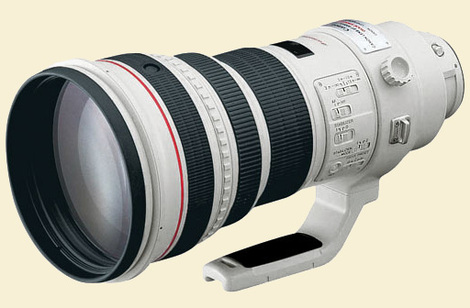
Canon EF 400mm ƒ/2.8L IS USM lens—Remember Canon's very first IS lens, for its film cameras (it's still available), and how you passed it around to all your friends so they could could see, and how you marveled over just how in the world they did that?
Nikon AF-S Nikkor 24–70mm ƒ/2.8G ED—Remember when zooms just weren't as good as primes?
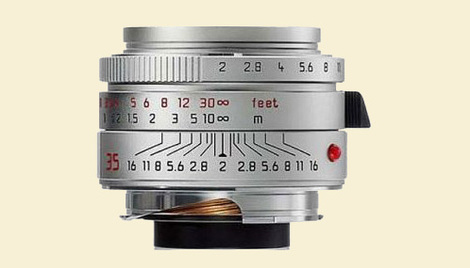
Leica 35mm Summicron-M ASPH—Remember when Leica had only one highly skilled craftsman who could make aspheric elements? And how the value of every $5,500 35mm Summilux Aspherical Type 1, with its hand-ground and -polished aspheric element, went up immediately after it left the manufacturer?
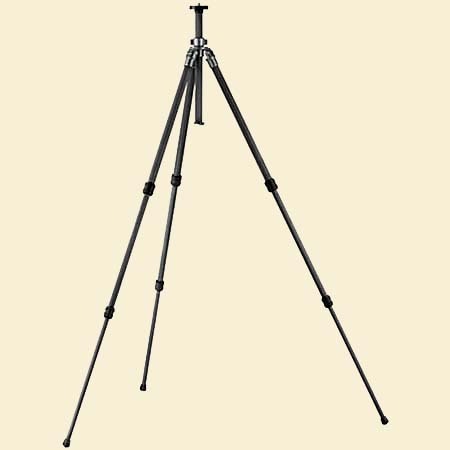
Gitzo Series 0 Mountaineer Carbon Fiber Tripod—Remember when lightweight tripods had legs made of aluminum tubing?

Flashpoint F-1128—Remember when carbon-fiber tripods were expensive?
Remember when everybody, but everybody, wore one of these when they were working? (Oops, sorry, delete that—they still do.)
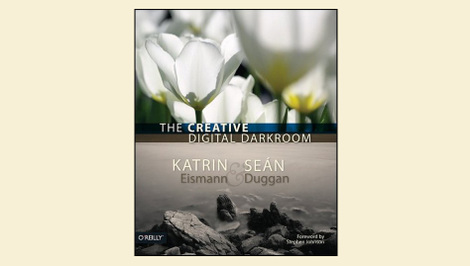
The Creative Digital Darkroom by Katrin Eismann and Seán Duggan—Remember when a "darkroom" really was a dark room?
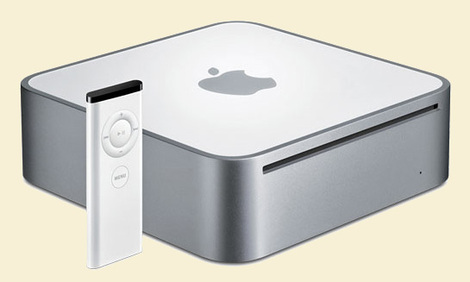
Mac Mini—Remember how much you paid for your first Macintosh? (For me it was $2,500 for a machine with half a MB of memory.)
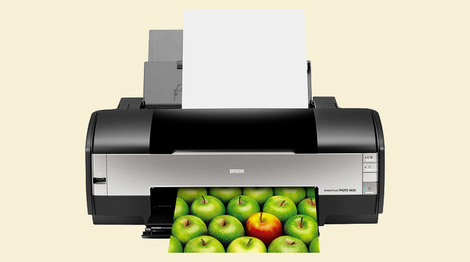
Epson Stylus Photo 1400—Remember when Epson was a new name on the scene that only a few people had heard of, and its Stylus Photo started making people realize that maybe inkjet was a viable medium for printing photographs after all? But you couldn't print on glossy paper and the ink dyes started fading after only a few years?
Canon iPF 5100 17"-wide, 12-ink pigment printer—Remember when the Epson 2000p came out—the very first consumer pigment inkjet printer? And how it was "wide-format" at 13" and "photo quality" because it had six inks instead of four? And remember that nasty metamerism?
Remember the first time you ever clicked on the address bar of a web browser, and how amazing it was that all that information came up so fast? Even if you'd now think it was pretty slow? And now you come here to The Online Photographer nearly every day, and don't think anything of it at all.
________________________
Mike
Featured Comment from Jon Bloom: "1 TB hard drives. The first hard drive I ever owned was a whopping 10 MB in size—a bit too small to hold one RAW image from a modern camera."
Mike replies: Good one, Jon. (Hope you don't mind the link I chose.) My brother and I frequently remember one of his "big" early purchases—a 20MB external hard drive about the size of a volume of an encyclopedia that cost $800.
Featured Comment by David A. Goldfarb: "Remember the technological marvel that greats like Richard Avedon used to make timeless images? You can still buy it—."
Featured Comment by Tom: "A comment on the original Digital Rebel. It was crippled, but a hard-working Russian hacker who went by the name Wasia hacked the firmware. All of a sudden I had FEC on my dReb. I was so elated that I posted it on my web site. My web traffic at that time was almost entirely my mother. But my one post mentioning that hacked firmware went over 5 digits worth of views. So my top 5 posts by views were like 3 views, 3 views, 4 views, 10 views (<—a cat photo) and 25,000 views. For that many people to be interested in loading some unknown Russian's hacked firmware on to their $1000 dReb is a pretty good indication of just how well it sold."
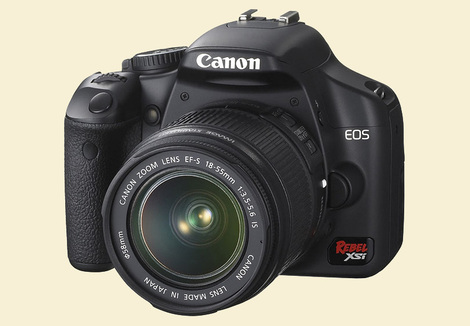
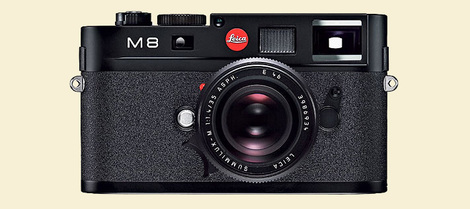
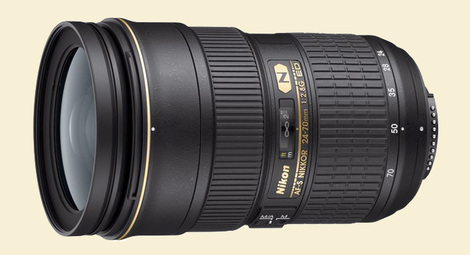
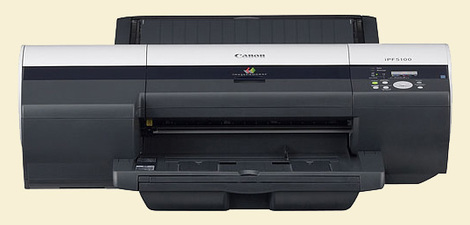



Thanks for the feel good post :)
Now where do I get enough money to buy all of this ?
Erez.
Posted by: Erez | Wednesday, 20 August 2008 at 01:15 AM
Erez,
When you find out, tell me.
Mike J.
Posted by: Mike J. | Wednesday, 20 August 2008 at 01:16 AM
I had almost forgot, but now I remember! Thanks for starting my day with a smile :)
Posted by: Svein-Frode | Wednesday, 20 August 2008 at 03:17 AM
Remember when everybody was worried about the millenium?
Really, it was just the start of a whole new world of imaging. I got my first digital camera in 2001, and bought one of those 6MP Digital Rebels in 2004. I made a lot of images with it which stand up technically today. Revisiting high ISO shots taken with it, which weren't bad to begin with, using contemporary NR software can be a revelation.
Now my darkroom is only dim, is dry and doesn't smell like it will shorten my lifespan - and - I can do so many things in/with it that I couldn't before.
And printers! Oh my. I can easily make color prints better than anything I could afford before.
Carbon fiber tripod? IS lens? Yeah, got those, and love 'em.
And the cameras! The 5D is a wonder. The F30 and A650 IS do things I could never dream of with small film cameras. To paraphrase Ben, twist and tilt screens, low noise high ISO and IS are proof that God loves us and wants us to be happy.
I've found the digital revolution to be a wonderful, deeply enjoyable thing. Even the Diana+ on its way to me will have its images scanned and printed digitally, as are the 35mm images I still make.
Moose
Posted by: Moose | Wednesday, 20 August 2008 at 05:01 AM
"....and don't think anything of it at all. "
Well I think a lot of it. In fact, the ability to see the work of lots of photographers when I feel the need, and to read the views of a huge and diverse range of photographers and critics - the creation of communities - is the biggest marvel to me, far more than all the gear.
So too is the humble podcast a marvel - something to make commuting bearable and add to one's stock of knowledge at the same time.
The other thing that I marvel at has been overtaken - my little F30 that I can take with me everywhere and never runs out of battery power or space for photos.
Posted by: hughlook | Wednesday, 20 August 2008 at 07:40 AM
The Canon EF 75-300mm f/4-5.6 IS USM was the first IS lens.
Posted by: Rico Ramirez | Wednesday, 20 August 2008 at 07:58 AM
I'm drooling....
Gotta add a Nikon body to pair with Nikon AF-S Nikkor 24–70mm ƒ/2.8G ED, tough.
Posted by: billitone | Wednesday, 20 August 2008 at 08:27 AM
I remember salivating over a Mac external hard drive. It was a 540 meg drive at the low price of $499.00 -less than a buck a megabyte. It would help my Mac with its new 1 meg memory stick ($100.00)with applications I could only dream of.
It still boots up faster than my current winblows xp gazillion everything computer.
Eric
PS Where is the jet pack/ flying car that Popular Science/Mechanics magazines promised me during the 60's. (And no the Segway is not a close compromise on this)
Posted by: eric mac | Wednesday, 20 August 2008 at 09:56 AM
Mike,
My list is long and partially reflects my age and 20 year absence from photography between about 1979 and '99.
When a family purchase of $700 on a 2MP Kodak reignited my dormant interest in photography I considered just using my existing Minolta film SLRs (an XE7 and xd11, with 135 and 21 or 24mm Vivitars in addition to the Rokkor 55s) and getting my negatives digitized. But I don't see that well or focus that fast. Auto-focus was so amazing that I had to get a newer camera - so even though it's not just from the last 5 years I vote for autofocus as the single advance that has most increased the number of keepers I shoot.
Another feature of digital that kind of comes along automatically for the ride is auto ISO. As someone who walks the streets of NY hoping for "grab" shots, I'm often in auto mode and when I don't have time to think about what ISO I want, knowing the camera will often get it right for me in time to get the shot is invaluable.
Next, even though you mentioned Canon IS, I was thrilled with the sensor-based "Anti-Shake" in my Dimage A1 and Maxxum 7D. Another advance that has increased the range of shots worth trying for.
My new Nikon 300D lets me shoot reasonably noiselessly at really high ISOs - this really increases the range of shooting I can do.I kept my Minolta 7D set at ISO 100 because of noise issues and often couldn't shoot at dusk without adjusting that. Now I let the Nikon zoom up as high as 3200 to get shots without resorting to flash!
All my digital cameras from the Dimage A1 on have allowed me to adjust the metered auto-exposure aperture or shutter-speed by just turning a knob. This is way faster and more accurate than realigning 2 needles.
Both my Nikon and my 7D allowed me to do wireless off-camera flash without buying any additional equipment (other than the flash). Using a single umbrella and stand for about 30 bucks, I'm thus able to run a quick portrait booth at semi-annual school fairs, letting the auto metering in the flash and camera do a quite creditable job of exposing.
I could keep going - but the thing that all of these features have in common is that they make more shots worth trying for and a much higher percent of them seem to work (I think I get about 10% usable shots now, up from a much lower number, if I'm honest)
Adam
Posted by: Adam Isler | Wednesday, 20 August 2008 at 10:28 AM
Remember when you could buy Polaroid film that produced both a positive and a negative?
Remember when you could manipulate the photos from your SX70 camera, for added fun and creativity?
Remember the excitement of getting your slides / photos / contact sheets back from the lab, or opening the tank in the darkroom after processing a batch of b+w film?
:-)
I shoot some digital, and plenty of film, and you are right about everything you say with the advance of technology in recent years Mike. I also tune into the net every day. But I hate to see the old analogue ways go too!! Out with the old, in with the new, as they say. Lets hang on to some of that cool old stuff I say ...!
Rory
Posted by: Rory | Wednesday, 20 August 2008 at 11:02 AM
This is a good "feel good" list, as Erez called it.
We in the photography world truly have a greater bounty of stuff available than ever. Not just "good" stuff, GREAT stuff.
But the excitement of the new is an eternal human emotion, particularly for amateur photo enthusiasts.
Posted by: Ken Tanaka | Wednesday, 20 August 2008 at 11:20 AM
You said it.
I feel like a middle aged geek every time I make a breathless post on my blog about how astounding the development is. Like the Canon D30 in 2001 compared to today's cheap ones. (It's only a couple years ago I thought digital cameras could never become as cheap as film cameras.)
I paid about four grand for my first Mac in 1995, including a laser printer.
Posted by: Eolake Stobblehouse | Wednesday, 20 August 2008 at 11:46 AM
Remember when people had to pay extra for each stabilised lens instead of having stabilisation in the body?
Oh, they still pay extra. >:-)
Posted by: erlik | Wednesday, 20 August 2008 at 11:49 AM
I just have to say - the first hard drive I used was 64K (yes K) of a PDP11 - that was the upgraded one from the 32K on the PDP8.
It was about 9 inches high in the equipment rack.
Keith
Posted by: Keith Smith | Wednesday, 20 August 2008 at 12:02 PM
"Now where do I get enough money to buy all of this?"
Dunno that it would work for everybody, but what I did was make a site with nekkid girls.
Posted by: Eolake Stobblehouse | Wednesday, 20 August 2008 at 12:54 PM
My first computer had an Intel 486 processor and a 520MB hard drive (with my stripped down, bare-minimum Windows 3.11 taking up 220MB of it!). I remember being able to back it up on a CD and still have room to spare :-) But I stopped being amazed the day I saw a 512MB SD card, so much tinier, yet capable of holding the same amount of data.
Oh, and remember when camera companies would listen to their customers in order to bring out products with specs we all wanted? No, wait, that never happened, did it? :-s
Posted by: Miserere | Wednesday, 20 August 2008 at 01:02 PM
OK, after reading some others' comments and looking at your original post closer, I have to add two additional remarks.
1. That Katrin Eismann book is, in my opinion, the finest book of its kind (on "digital darkroom" techniques I've ever seen. It's a relatively timeless work that I highly recommend. Katrin is an excellent educator.
While I'm recommending such books I have to also HIGHLY recommend Leslie Alsheimer's "Black and White in Photoshop CS3 and Photoshop Lightroom" (Focal Press). (Mike, please provide the TOP amazon link for this book if possible.) It's superb, too.
2. Speaking of whopper hard disks, just this week I connected a Newertech 1 Tb miniStack drive (approx. $300) to my 1 Tb Time Capsule / Airport Extreme station and installed my entire image library on it. (Fun fact: It takes almost exactly 5 hours to transfer 490 Gb over a Firewire 800 connection.) I can now work on my Lightroom library either from my office desktop system or wirelessly from my MacBook Pro. It's a dream. But more to the point here, it's simply breathtaking to be talking terrabytes in one's home...for so little cost.
Posted by: Ken Tanaka | Wednesday, 20 August 2008 at 01:03 PM
Remember when to get a decent flash exposure you had to divide the guide number by the distance and use the result to manually set the aperture?
Posted by: Chuck Holst | Wednesday, 20 August 2008 at 01:30 PM
This is going to be a really fun post to look back upon a few years down the road =).
Posted by: Amin | Wednesday, 20 August 2008 at 02:05 PM
Remember when "Dual Disk Drives" meant we had infinite storage capacity, because you could keep the operating system and software running on one disk and swap data disks in the other drive?
Posted by: David A. Goldfarb | Wednesday, 20 August 2008 at 03:17 PM
"It was about 9 inches high in the equipment rack."
Equipment rack? You had an equipment rack? I only had a stick, and it was a crooked stick...
Seriously, I wrote a novel on a Radio Shack computer using an old color TV set as a monitor and a Radio Shack tape recorder for mass storage and I was *very* pleased with that system. The computer was the TRS 80 Color Computer that came (I think) with a native 32K of memory, I believe, but somehow the word processor was able to access 64K. I can't remember the name of the word processor, but it was more than we needed, and I think had the number "64" in the name. The word processor loaded into RAM, just like the documents, and we *still* had enough space to write some fairly complicated stuff.
JC
Posted by: John Camp | Wednesday, 20 August 2008 at 03:19 PM
Remember diluting glacial acetic acid for stop bath? It would clear your sinuses though. Now I use ACR and PSE6. Not easier just different.
Posted by: Dave Kee | Wednesday, 20 August 2008 at 03:21 PM
Dear Folks,
Indulging my curiosity once again...
Does anyone here actually use 32 GB memory cards in their digital cameras, and if so, why and what for?
I just bought an 8 GB for my Fuji S100, and even with its bloated RAW files (23 MB), it'll still hold 350 photos. Can't imagine why I'd want a single card that would hold 1400 (but I'm figuring that's a failure of my imagination).
Even after doing personal computing for more than 40 years, I still regularly suffer future shock. I can't believe I've got 3 TB of data storage in this office. I can't believe I whine about how my 2 Kg laptop computer (a laptop!!!) only has 4 GB of memory and how this cramps my style.
pax / Ctein
Posted by: Ctein | Wednesday, 20 August 2008 at 03:22 PM
>>Panasonic Lumix DMC-LX3—Well, okay, you can't quite buy this yet.
In fact it is available in stores here in Switzerland.
Posted by: Carsten Bockermann | Wednesday, 20 August 2008 at 03:32 PM
How about an iPod (or equivalent)
*Days* of music in your pocket and room to back up your photos, too.
Posted by: KeithB | Wednesday, 20 August 2008 at 05:17 PM
"Remember when to get a decent flash exposure you had to divide the guide number by the distance and use the result to manually set the aperture?"
Good one, Chuck! And do I ever.
Mike J.
Posted by: Mike J. | Wednesday, 20 August 2008 at 05:26 PM
Great post, Mike.
Always brings a chuckle to my lips when I think about all the money and time we've spent doing the things we enjoyed.
The creative ways we got around the obstacles was probably part of the fun for some people. For others, the fun must have been the collective agony, and being able to relate to a fellow photographer.
Thanks for keeping up the discourse of photography.
Posted by: Kainnon | Wednesday, 20 August 2008 at 05:29 PM
Ctein wrote: "Can't imagine why I'd want a single card that would hold 1400 (but I'm figuring that's a failure of my imagination)."
I have a 4GB card and thought along the same lines (I usually don't fill it in 1 week of my normal amateur shooting)...until I shot a live concert with two bands. In the break between the bands I had to start deleting files in-camera to make room for the second band! :-)
I once spoke to a photographer who had shot opera, and he said his average number of shots per show was 3000. Yes, that's three zeroes. He might need the upcoming 64GB card...
Posted by: Miserere | Wednesday, 20 August 2008 at 05:59 PM
Everyone has a "You can't top this" old time story. I'm happy to live in the present and dream of a peaceful and productive future. I'll just make a quick mention that I started my software development career by learning to program a TRS-80 over one Thanksgiving weekend in the dim and distant 1970s. I'm glad times have changed.
Posted by: Ken White | Wednesday, 20 August 2008 at 06:48 PM
I remember the early (and prohibitively expensive!!) days of Digital SLR's when there was the distinct possibility that someone would start making affordable "digital backs" for your existing 35mm film cameras. I waited for months hoping to be able to buy something like that for my beloved Nikon N80. Well, of course those never materialized, but that's a completely moot point today.
It makes me shudder with glee every time I see just how much camera $1000 can buy nowadays.
Posted by: Michael | Wednesday, 20 August 2008 at 09:27 PM
Going back a bit further with digital cameras....the first digital camera I was issued as a photojournalist (1996) was a Kodak DCS-3 utilizing a 1.3MB sensor, internal battery, no preview screen, and a price tag of $15,000. Our Kingston PCMCIA micro-drives topped out at 180MB and sounded like maracas if dropped as the glass disks shattered easily.
Posted by: chuck kimmerle | Wednesday, 20 August 2008 at 11:08 PM
20MB hard drive? Luxury!
My first computer was a Sinclair ZX81, which came out in, um, 1981, growing up in the UK. It had a whopping 1K (not MB, but individual kilobyte) of RAM. That meant if the power went off (easy to do with the dodgy transformer connection) you lost everything. Persistent storage consisted of a tape recorder.
I was in heaven the day we got a 16KB memory module that plugged into the back, but it frequently got disconnected also and again you lost everything.
Here's a picture of a ZX81 I took at a rather good computer museum in Paris: http://richardsona.zenfolio.com/p722463869/?photo=726199341
The museum is at the Grande Arche at La Defense, of all places, and has lots of great vintage gear.
Posted by: Adam Richardson | Thursday, 21 August 2008 at 01:49 AM
Man, I loved the rebel. That camera allowed me to begin learning and enjoying photography in a way that I would never have gotten to with film. I never use it anymore but I'll never get rid of it, it's got special spot in my heart. I took great joy in sending it with a friend who was studying abroad in Morocco over this past summer. I liked the idea of it being pressed into service again and not just gathering dust... although it certainly came home with its fair share of dust.
Posted by: Stephen | Thursday, 21 August 2008 at 02:31 AM
"Remember when to get a decent flash exposure you had to divide the guide number by the distance and use the result to manually set the aperture?"
1. Remember when you learned that you had to replace all your Nikon AF lenses with AF-D lenses to do the same?
2. Remember when the Nikkor-GN, a 45mm lens did this for you automatically? It seemed like a really bright invention at the time. Actually, considering the simplicity of the approach, it still does.
Posted by: Mani Sitaraman | Thursday, 21 August 2008 at 02:32 AM
I'm still using my 800mhz eMac. It turns six this month. I'll upgrade to the Mac Mini.
Posted by: Rico Ramirez | Thursday, 21 August 2008 at 02:37 AM
A 32 GB memory card is quite amazing. But I'm still amazed that a decent 4 GB CF card now costs about $40 (e.g. Sandisk Ultra II). It wasn't but four years ago when I bought a 256 MB Sandisk CF card for about $40. In four years, the price dropped 16x!
And speaking of computer stuff, another great thing are those little USB flash memory sticks. Earlier this year, I picked up a Kingston 4 GB for about $19. A little more than a decade ago when I was in college, we always had to fuss with keeping enough 1.44 MB 3.5" floppy disks on hand to transfer our data between computer labs on campus. Just think- my 4 GB stick (that fits nicely in my pocket along with my keys) is the equivalent of 2778 3.5" disks! :-)
Posted by: TJ Avery | Thursday, 21 August 2008 at 08:38 AM
And... Remember those clunky, cylindrical memory cartridges which needed to be changed every 36 frames because that was all they could take? :-)
Posted by: Roland | Thursday, 21 August 2008 at 02:58 PM
Man, this sort of reading makes me feel reaaaally old...
I still remember when I bough my first auto exposure semi pro SLR (Pentax ME, sorry I have weird tastes) and every professional in town despised autoexposure as an unneccesary gimmick. And how amazed I was when I developed the first roll and found out the camera judged the exposure 8 out of 10 times better than me. In fact, I remember the first autofocus camera I heard about, the focus assisted Pentax Me... I did despise autofocus then and thought it was an unnecessary gimmick. The most common comment then was "What's gonna be next? Auto framing?" Nobody could even imagine face detection or smile shooters.
I remember when I bought my first computer, a two floppy machine made by Toshiba that cost me US$9,000 in 1980, which would translate into what, $50,000 today? Last PC I bought cost US $400.
Not so long ago I bought an Avid editing system that set me back US$120,000. It was made up of a 9600 Powermac, a Targa video card and a propietary connexion box. And of course the software. Worked with 9 Mb external SCSI hard disks that costed 4,000 dollars each. You could install third party drives but they--Avid--would deny you assistance, void your guarantee, etc. Those costed "only" 1,600 dollars.
But what I find even harder to believe is that today's 35mm. Film cameras (writing about the ones used in Hollywood productions here) are cumbersome, fully manual devices that need a crew of four people to do what a simple US$ 100 compact p&s does on its own. Of course that manual control, dedication and sheer manpower produce fabulous quality images , but it's still an unbelievably archaic, expensive and arcane way of working.
Posted by: J_C | Thursday, 21 August 2008 at 03:48 PM
in january of 2001 i purchased one of the very early nikon D1 bodies for the typical $5000 price tag. But, to go with it, I purchased two 64mb cf cards for $249.00 each.
a couple years later, after using the very- cost-effective-for-their-time 1gb microdrives for a year or so, i had a couple die on me in a short period of time.
i made the big move and purchased the lexar 16x 1gb solid state card for $1199.00!
from 2001 til about 2006, cf cards were a legitimate expenditure in the digital photography chain. they seem a non-factor at this point.
john
boston
Posted by: john gillooly | Friday, 22 August 2008 at 12:12 AM
Remember the Canon RC250 "Xapshot" still-video camera? The first electronic camera I ever worked with. Not digital, it stored analog NTSC frames on a tiny floppy disk. We bought one at work to take photos for graphics classes. I remember transferring images to the computer via a TARGA video capture card and taking them home on floppies to edit in PhotonPaint on my Amiga.
Posted by: Bryan C | Friday, 22 August 2008 at 01:51 PM
Bryan C,
I remember the Xapshot well. It had an 11mm lens, if memory holds. We had one students could sign out in photo school. I remember a party where most of the people in attendance were photographers. We'd pass the Xapshot around and whoever had it would fill it up, then we'd review the shots on the television and vote whether each shot could be kept or culled. Spirits got, um, very high. Then a new person would take the camera and fill up whatever space remained on the floppy. By the end of the evening we had a pretty dynamic record of the party, with some very inventive shots. I still wish somebody had kept that disk--it would be very interesting to me to review it again now.
Mike J.
Posted by: Mike J. | Friday, 22 August 2008 at 04:34 PM
I would add the UPStrap to this list. I would however like them to make one of the lightweight ones (SL is it?) with 1/2 the thickness of rubber.
Great product but still more robust than I need.
Interesting read and list.
Posted by: charlie d | Friday, 22 August 2008 at 05:13 PM
Remember that time when the only reliable source of photographic information was your high street specialist photographic retailer? and remember when photography magazines were a sorry excuse for soft porn?
Posted by: Puplet | Friday, 22 August 2008 at 06:52 PM